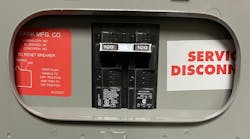Tentative Interim Amendment (TIA) Log #1349 to NFPA 70, National Electrical Code, 2017 edition, revises Sections 682.2 and 682.15. The comment closing date on this TIA is Dec. 21, 2017.
As outlined in portions of the Substantiation section of this TIA:
“The addition of the definition for ‘pier’ is necessary to appropriately apply and enforce the safety provisions established for such a structure covered by Article 682 that is not currently defined in the NEC. Without this definition, the enforcement of electrical safety will not be uniformly applied to such a structure. Piers located on other bodies of water currently are not required to have the 30mA ground fault protection that has been in place in NEC 555.3 for docking facilities for over 6 years where similar hazards exist and documented deaths exist to support the immediate addition of protection. Item (B) is new language added to provide a maximum of 30mA ground fault protection for the branch circuit and feeder conductors for piers and is intended to parallel the requirements for docking facilities in NEC 555.3.”
As outlined in portions of the Emergency Nature section of this TIA:
“The 2017 NEC focuses on protecting from electric shock drowning in the water around docking facilities. Electric Shock Drowning is not limited to water around docking facilities but extends to piers that provide access to water. Deaths have been documented at residential piers that are not used to dock a boat. Therefore, it is prudent to address electrical safety on piers where access to water is similar to a docking facility to prevent further electric shock drowning events. The addition of this definition will ensure the appropriate application of the requirements.”
You can view the full text of the TIA on the NFPA website.
Note: A TIA is tentative because it has not been processed through the entire standards-making procedures. It is interim because it is effective only between editions of the standard. A TIA automatically becomes a public input of the proponent for the next edition of the standard; as such, it then is subject to all of the procedures of the standards-making process.



